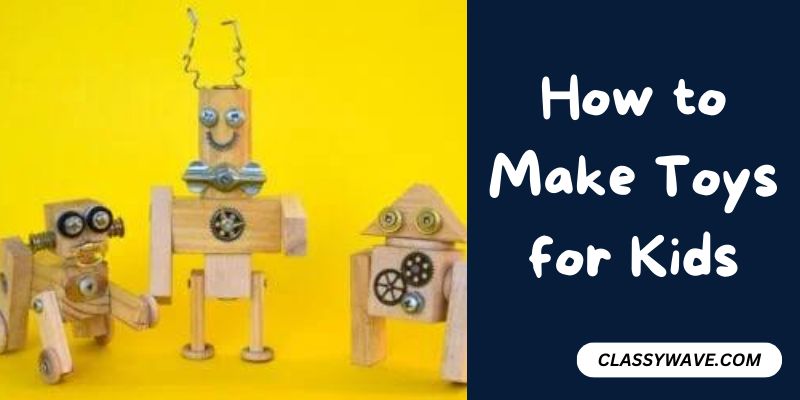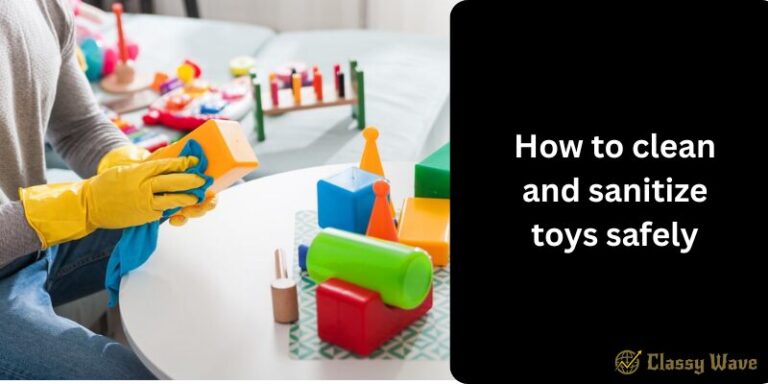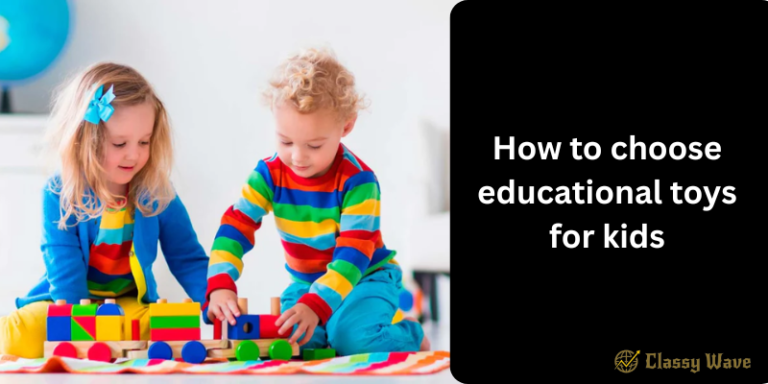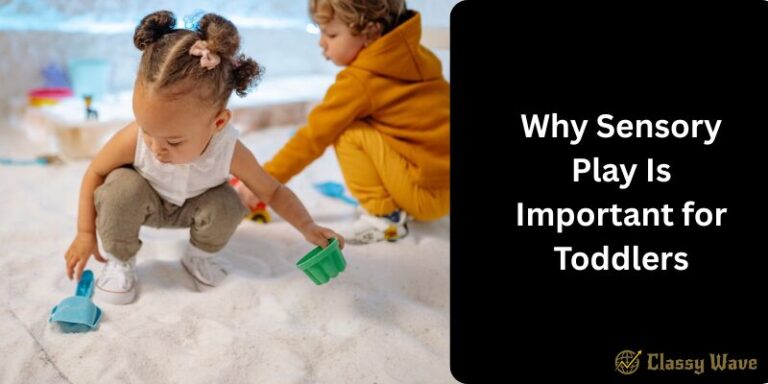How to Make Toys for Kids – Guide
In a world filled with mass-produced toys, there’s a special charm in crafting personalized playthings for kids. The joy of creating something unique and tailored to a child’s interests is unparalleled. Let’s dive into the world of handmade toys and explore the magic of crafting with love and creativity.
Benefits of Handmade Toys
Personalized Touch
Handmade toys carry a personal touch that store-bought ones lack. Each creation is infused with the maker’s care and attention to detail, ensuring a unique and cherished item for the child.
Environmentally Friendly
Crafting toys at home allows for the use of eco-friendly materials, reducing the environmental impact of plastic and battery-operated toys. It’s a small step towards sustainability.
Cost-Effective
Homemade toys often require minimal materials, making them a cost-effective alternative to expensive store-bought options. Plus, many materials can be repurposed from household items.
Materials and Tools
Choosing Safe Materials
Safety is paramount when making toys for children. Opt for non-toxic, child-friendly materials to ensure the well-being of the little ones who will play with your creations.
Essential Tools for Toy Making
From basic sewing kits for fabric toys to sturdy cardboard for constructing playhouses, having the right tools on hand makes the toy-making process smooth and enjoyable.
DIY Toy Ideas
Simple Sock Puppets
Transform old socks into adorable puppets with just a few simple steps. This easy and budget-friendly project guarantees hours of imaginative play.
Cardboard Box Playhouse
Unleash creativity by repurposing cardboard boxes into a magical play space. With a bit of paint and decoration, a simple box becomes a castle, spaceship, or secret hideout.
Homemade Playdough
Create a sensory delight by making playdough at home. Not only is it easy to craft, but it also allows kids to engage in shaping and molding, enhancing their fine motor skills.
Step-by-Step Toy Making
Sock Puppet Assembly
1. Gather materials: socks, buttons, and felt.
2. Cut and sew sock shapes.
3. Decorate with buttons for eyes and felt for mouths.
4. Enjoy puppet shows with your handmade creations.
Constructing a Cardboard Playhouse
1. Collect large cardboard boxes.
2. Cut and design openings for windows and doors.
3. Paint and decorate the exterior.
4. Watch as kids embark on imaginative adventures.
Mixing Playdough at Home
1. Combine flour, salt, water, and food coloring.
2. Knead the mixture until smooth.
3. Provide molds and tools for endless sculpting possibilities.
4. Store in airtight containers for future use.
Safety Measures
Child-Friendly Materials
Prioritize materials that are safe for children, avoiding small parts that could be a choking hazard. Ensure all components are securely attached to prevent accidents.
Supervision During Crafting
While crafting with kids, maintain a watchful eye to guarantee their safety. Explain any potential risks and guide them through the process, fostering a positive and safe environment.
Ensuring Durability
Create toys with durability in mind. Reinforce seams, use sturdy materials, and anticipate wear and tear to ensure your creations withstand the test of time.
Educational Value
Learning Through Play
Handmade toys offer educational benefits, encouraging learning through play. Whether it’s counting with playdough or storytelling with puppets, children absorb knowledge while having fun.
Enhancing Creativity
The open-ended nature of crafting sparks creativity. Kids learn to think outside the box, experiment with colors and shapes, and develop their artistic abilities.
Building Problem-Solving Skills
Encountering challenges during the crafting process helps children develop problem-solving skills. Overcoming obstacles fosters resilience and a sense of accomplishment.
Building Memories
Bonding Through Crafting
The act of creating together strengthens bonds between parents, guardians, and children. Crafting becomes a shared experience filled with laughter, learning, and love.
Documenting the Creative Process
Capture the joy of creation by documenting each project. Whether through photos or a simple journal, preserving the memories enhances the sentimental value of handmade toys.
Long-Lasting Sentimental Value
Unlike mass-produced toys that may lose appeal quickly, handmade creations hold sentimental value. They become treasured keepsakes, evoking memories of a joyful childhood.
Tips for Success
Start With Simple Projects
Begin your toy-making journey with straightforward projects. As you gain confidence and skills, gradually tackle more complex creations.
Involve Kids in the Process
Let children contribute their ideas and creativity to the crafting process. Involving them creates a sense of ownership and pride in the finished product.
Embrace Imperfections
Handmade toys are unique, and imperfections add character. Embrace the quirks and irregularities, as they contribute to the charm of your creations.
Sharing the Fun
Hosting Crafting Parties
Spread the joy of toy-making by hosting crafting parties. Gather friends and family for a creative celebration, exchanging ideas and inspiration.
Gift-Giving With Homemade Toys
Personalized handmade toys make heartfelt gifts. Consider crafting toys as special presents for birthdays, holidays, or other occasions.
Inspiring Others to Create
Share your passion for handmade toys with others. Inspire friends, neighbors, and fellow parents to embark on their own creative journeys.
Community Impact
Donating Handmade Toys
Extend the joy beyond your household by donating handmade toys to local charities or schools. Your creations can bring smiles to children who may not have access to such treasures.
Fostering a Sense of Community
Connect with like-minded individuals through local crafting groups or online communities. Share ideas, tips, and stories, creating a supportive network of fellow toy makers.
Contributing to Sustainability
By choosing eco-friendly materials and repurposing items, you contribute to sustainability. Handmade toys are not only thoughtful but also environmentally conscious.
Overcoming Challenges
Dealing With Frustration
Accept that not every project will go smoothly. Embrace challenges as learning opportunities, and don’t be discouraged by occasional setbacks.
Finding Inspiration
If you ever feel stuck, seek inspiration from various sources. Browse crafting websites, attend workshops, or simply take a nature walk to reignite your creativity.
Improving Crafting Skills
Continuous improvement is key. Attend workshops, read books, or watch tutorials to enhance your crafting skills and take your creations to the next level.
Popular Toy Making Trends
Embracing Eco-Friendly Designs
As awareness of environmental issues grows, there’s a trend toward using sustainable and eco-friendly materials in toy making. Explore options like recycled fabrics and non-toxic paints.
Incorporating Technology
Blend traditional craftsmanship with modern technology. Consider adding simple electronic components to enhance certain toys, creating a balance between classic and contemporary.
Mixing Traditional and Modern Approaches
Combine time-tested crafting techniques with modern design aesthetics. The fusion of traditional and modern elements can result in truly unique and captivating toys.
Testimonials and Success Stories
Real-Life Experiences
Hear from individuals who have embraced toy making as a creative outlet. Discover their journeys, challenges, and the profound impact crafting has had on their lives.
Positive Impact on Children
Explore stories of how handmade toys have positively affected children’s development, sparking imagination, fostering learning, and creating lasting memories.
Building a Supportive Community
Learn about communities that have formed around the shared love of handmade toys. Discover the power of connecting with others who share your passion and exchanging ideas.
Conclusion
In conclusion, the world of toy making is not just about crafting tangible items but about creating cherished memories, fostering creativity, and contributing to a sense of community. Embrace the joy of handmade toys, and embark on a journey that goes beyond the finished product.
FAQs
Can I make toys even if I’m not crafty?
Absolutely! Start with simple projects and gradually build your skills.
Are homemade toys safe for young children?
Yes, as long as you use child-friendly materials and prioritize safety during the crafting process.
How can I involve my kids in the crafting process?
Let them choose colors, shapes, and contribute ideas to make it a collaborative effort.
What materials should I avoid when making toys?
Avoid small parts that could be a choking hazard, and opt for non-toxic materials.
Can I sell handmade toys for a business?
Yes, many crafters turn their hobby into a business. Ensure compliance with safety standards and regulations.







